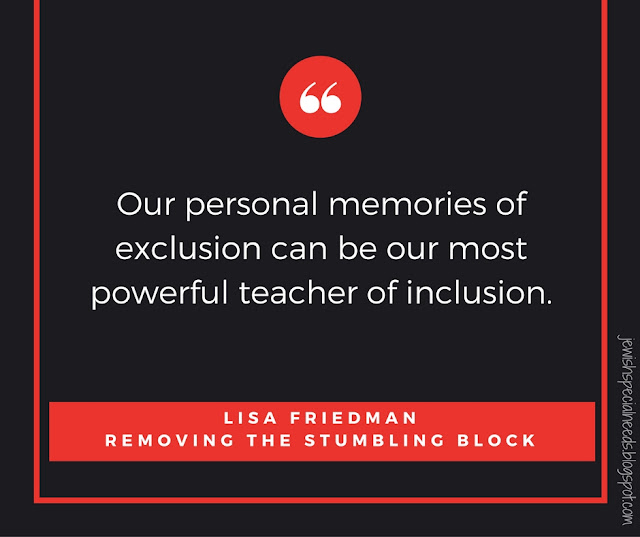Someone I follow on Facebook shared the following article: How to Teach Your Child to be an “Includer.” It’s an older article, so I found myself wondering if she was sharing this now because it felt particularly timely, or if it was more of an extension of her own consistent, personal commitment to inclusion. Either way, it resonated with me and had me immediately recalling a post that I wrote which was widely shared: Teach Your Children to Be Accepting of Disabilities.
It’s easy to write blog posts and forget about them. We live in an age of immediacy. Often, if something doesn’t happen in the moment, it won’t happen at all. Instant gratification has become the norm, even when we know that delaying gratification and taking time to process and reflect can be critical. It’s why I pointed out the fact that the article shared a few days ago was written a few months ago. Life moves fast. So even when blog posts “do well” and people read and share widely, a week or two later those same pieces are forgotten; and citing something written a few months or even a year ago can seem outdated.
In this case, I think the message bears repeating and re-sharing: We CAN teach our children to be accepting. We CAN teach our children to be “includers”. And, maybe most importantly, we CAN teach our children to be kind.
Children really will do what we do. We have the power to model for them each and every day. We have the power to teach, through our own actions, how to be kind, compassionate and inclusive.
I think the strategies outlined in the original article are sound:
Listen and empathize
“When we
empathize with our kids, we teach them to do the same for others.” Directly
modeling and teaching empathy will send ripples of kindness into the world. It is
our responsibility to be there for children and guide them as they work through
their emotions. It can be extremely difficult to listen to a child share a
painful experience and the temptation to say something like, “What a terrible friend!”
or “He/she was wrong to do that!” is powerful. But what a child most needs to
hear in such a moment is, “That sounds awful. You must feel so upset right
now.”
Be an “includer”
“If we want
our kids to learn to reach out to others and include new people (or people they
wouldn’t otherwise sit with), we need to do the same.” It’s easy to tell this
to our children, but it is often so much harder to model it ourselves. Find
opportunities to step out of your own comfort zone to demonstrate to a child
how meaningful it can be to cultivate a new relationship.
Look for someone who needs a friend
“Young
children like routine (so do adults!!) and tend to sit at the same table at
lunch or play with the same groups at recess, but this can be limiting. Teach
your child to scan the room (or field) to look for someone who might need a
friend. Practice ways to invite a new kid into the group or ask others to join
a game. When kids practice these skills at home, they are better able to use
them out in the world.” There is little that I would add, here. This is spot
on.
Talk about unintentional exclusion
“Talk to
your kids about what it means to exclude and how they can include others. Ask
your kids to draw connections between being excluded and possible negative
emotions and between being included and
possible positive emotions.” Each of us can call to mind a time when we felt
excluded. We can remember the pain and hurt associated with such a situation.
These are the memories that can be our most powerful teachers. We can use these
moments of personal pain and exclusion to rewrite the story for someone else.
We can be the one to open the door and include.
Sign up here to be sure you never miss a post from Removing the Stumbling Block:

No comments:
Post a Comment